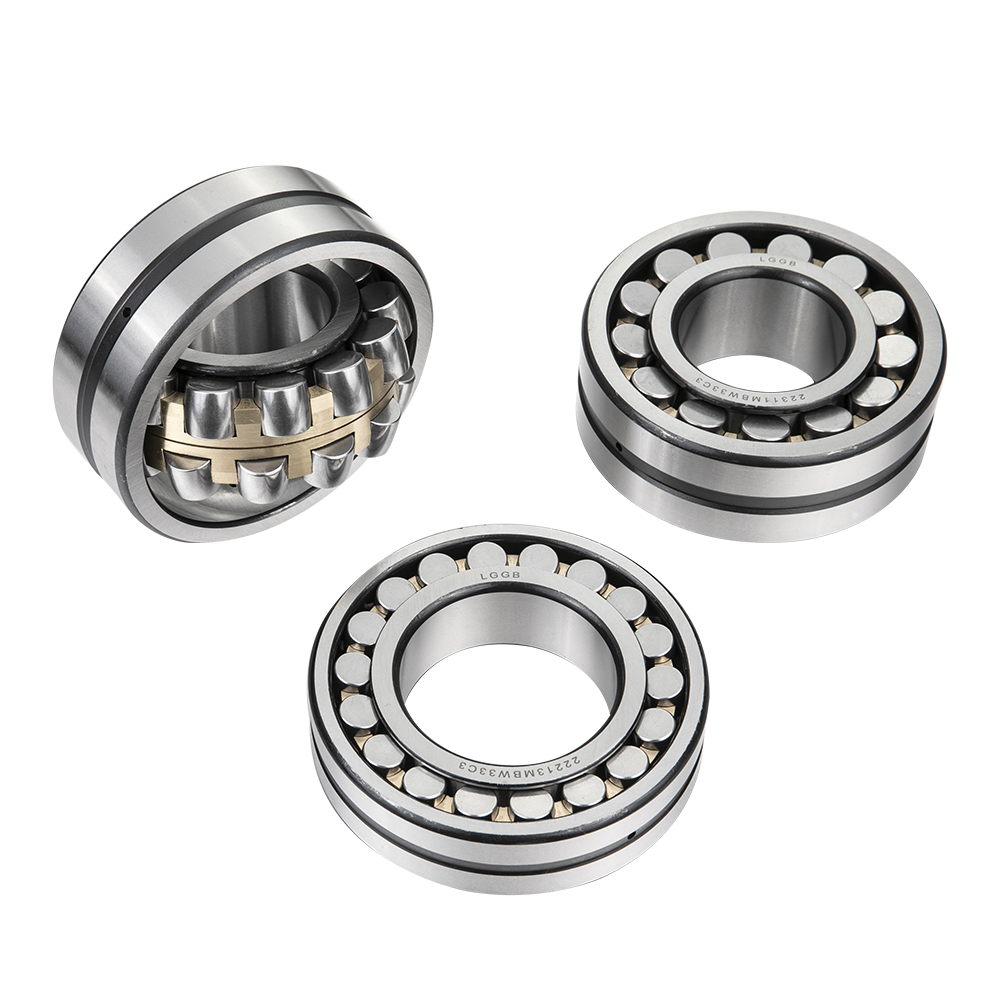Við notum að minnsta kosti 200 legur á hverjum degi í lífi okkar. Það hefur breytt lífi okkar. Nú eru vísindamenn líka að gefa legum vitur heila, svo að hann geti hugsað og talað. Á þennan hátt, fyrir nákvæmni legur á háhraða járnbrautum, getur fólk líka skilið alla stöðu leganna án viðhalds. Með hraðri þróun vísinda og tækni hefur þrýstingurinn á legur orðið sterkari og meiri og gæðakröfurnar verða einnig hærri.
Hugmyndin og flokkun rúllulegur
Algengar rúllulegur eru almennt samsettar af grunnþáttum eins og tveimur hringjum (þ.e. innri hringur, ytri hringur), veltihlutum og búrum. Til þess að eiga við sérstakar kröfur munu sumar legur auka eða minnka suma hluta.
Fjórar aðgerðir rúllulegur
Innri hringurinn passar venjulega þétt við skaftið og snýst með skaftinu.
Ytri hringurinn vinnur venjulega með legusætisholinu eða skel vélræna hlutans til að gegna aukahlutverki.
Veltihlutunum er jafnt raðað á milli innri og ytri hringsins með hjálp búrsins og raðform, stærð og magn ákvarðar beint burðargetu legsins.
Búrið aðskilur veltihlutana jafnt og stýrir veltihlutunum til að fara á rétta brautina.
„Þrýstu nálarrúllulegur“
Aðskiljanlegar legur eru samsettar úr hlaupabrautarhringjum, nálarrúllum og búrsamstæðum, og hægt er að sameina þær með stimpluðum þunnum hlaupabrautarhringjum (W) eða þykkum hlaupbrautarhringjum (WS). Óaðskiljanlegar legur eru óaðskiljanlegar legur sem samanstanda af nákvæmni stimpluðum hlaupabrautarhringjum, nálarúllum og búrsamstæðum. Þessi tegund af legum þolir einstefnuásálag. Það tekur lítið pláss og stuðlar að þéttri hönnun vélarinnar. Flestir þeirra nota aðeins nálarrúllu- og búrhluti og nota festingaryfirborð skaftsins og húsið sem kappakstursyfirborðið.
Þessi tegund af legum er búin stýfðum keflum, sem stýrt er af stórum rifjum innri hringsins. Í hönnuninni skerast hornpunktar keilulaga yfirborðsins á yfirborði innri hringrásarbrautarinnar, ytri hringhlaupsyfirborðsins og rúlluflöturinn á punkti á miðlínu legunnar. Einraða legur geta borið geislaálag og einstefnu ásálag, og tvíraða legur geta borið geislaálag og tvíhliða axialálag og eru hentugar til að bera mikið álag og höggálag.
„Sívalar rúllulegur“
Hægt er að skipta sívölum rúllulegum í ein-raða, tvöfalda röð og fjölraða sívalur legur í samræmi við fjölda raða af veltihlutum sem notaðar eru í legunni. Meðal þeirra eru ein-raða sívalur legur með búrum mikið notaðar. Að auki eru til sívalur rúllulegur með öðrum burðarvirkjum eins og einraða eða tvíraða fullkomnar rúllur.
Einraða sívalur legur eru skipt í N gerð, NU gerð, NJ gerð, NF gerð og NUP gerð í samræmi við mismunandi rif hringsins. Sívalar rúllulegur hafa mikla geislamyndaða burðargetu og geta einnig borið ákveðna einstefnu eða tvíhliða axialálag í samræmi við uppbyggingu rifsins á hringnum. NN gerð og NNU gerð tvöfaldur raða sívalur rúllulegur eru fyrirferðarlítil að uppbyggingu, sterkar í stífni, stórar í burðargetu og litlar í aflögun eftir að hafa verið hlaðnar, og eru aðallega notaðar til að styðja við vélarsnælda. FC, FCD, FCDP gerð fjögurra raða sívalningslaga legur þola mikið geislamyndað álag og eru aðallega notaðar í þungar vélar eins og veltingur.
Þessi gerð legur er búin kúlulaga rúllum á milli ytri hrings kúlulaga hlaupsins og innri hrings tvöfalda hlaupsins. Samkvæmt mismunandi innri uppbyggingu er það skipt í fjórar gerðir: R, RH, RHA og SR. Þar sem bogamiðja ytri hringrásarbrautarinnar er í samræmi við legumiðjuna hefur það sjálfstillandi frammistöðu, þannig að það getur sjálfkrafa stillt skaftskekkjuna sem stafar af sveigju eða misjöfnun skaftsins eða húsnæðisins. Getur borið geislaálag og tvíátta ásálag. Sérstaklega er geislaálagsgetan stór og hún er hentug til að bera mikið álag og höggálag. Málmvinnsla WeChat, innihaldið er gott, það er athyglisvert. Hægt er að setja saman og taka í sundur kúlulaga legur á skaftinu með því að nota festingar eða útdráttarhylki. Kúlulaga rúllulegur geta borið mikið geislamyndaálag, en geta einnig borið ákveðið ásálag. Ytri hringrásarbraut þessarar gerðar er kúlulaga, þannig að hún hefur sjálfstillandi frammistöðu. Þegar skaftið er beygt eða hallað undir krafti, þannig að hlutfallslegur halli miðlínu innri hringsins og miðlínu ytri hringsins fari ekki yfir 1 ° ~ 2,5 °, getur legan samt virkað. .
Álagsrúllulegur eru meðal annars þrýstikúlulaga legur, þrýstisvalur legur og mjókkúlulegur. Kúlulaga legur geta borið bæði ás- og geislaálag, en geislamyndaálagið skal ekki fara yfir 55% af ásálaginu. Annar mikilvægur eiginleiki þessarar gerðar er sjálfstillandi árangur hennar, sem gerir það minna viðkvæmt fyrir misstillingu og sveigju öxuls. Hladdu bara P og P. Ekki meira en 0,05C, og skafthringurinn snýst, legan leyfir ákveðið svið sjálfstillandi horns. Lítil gildi henta fyrir stórar legur og leyfilegt jöfnunarhorn mun minnka eftir því sem álagið eykst.
„Kúlulaga legur“
Kúlulaga legur eru helst notaðar í forritum sem krefjast einfalds búnaðar og íhluta, eins og landbúnaðarvélar, flutningskerfi eða byggingarvélar.
Hornkúlulegur geta borið geislaálag og axialálag á sama tíma og geta einnig borið hreint axialálag og hámarkshraðinn er hár. Hæfni þessarar gerðar til að bera ásálag ræðst af snertihorninu. Því stærra sem snertihornið er, því meiri hæfni til að bera axialálagið.
Birtingartími: 25-jan-2022


